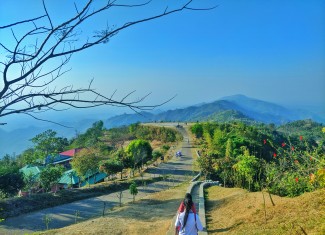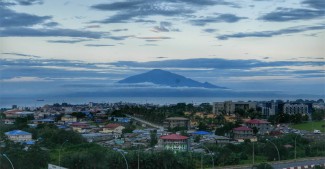On Timor-Leste’s development progress, and what remains to be done
Timor-Leste joined the United Nations in 2002 as a newly independent country facing the challenges of building national institutions and infrastructure, and delivering basic services in a post-conflict setting. Nevertheless, it progressed as soon as 2015 to meeting the criteria to graduate from least developed country (LDC) status.
How was this achieved?
The country had a helping hand from its substantial petroleum revenues, which have been deposited in the Petroleum Fund, a national sovereign wealth fund. A Development Finance Assessment (DFA) published in 2019 notes that while overseas development assistance (ODA) provided about three-quarters of government expenditure from 2002-2006, it was quickly overtaken by spending from petroleum revenues, amounting to over US$8.5 billion in transfers to the state budget between the Fund’s establishment in 2005 through the end of 2016.
Timor-Leste has met the criteria for graduation from the LDC category based mainly on its high income, with the country’s GNI per capita more than double the graduation threshold established at the UN’s Committee for Development Policy (CDP) triennial reviews in 2015 and 2018. This eligibility for graduation is based on the “income-only threshold”, under which a country can qualify for graduation without meeting the other criteria on human assets or economic vulnerability, because the country is considered to have sufficient resources to make progress with the other two criteria. That said, Timor-Leste did also qualify for graduation, albeit marginally, in 2018 under the human assets index, comprising health and education indicators.
Although Timor-Leste meets the numerical thresholds, the CDP has not yet recommended it for graduation because of concerns about the sustainability of its development progress. This corresponds with the Government’s own assessment. All aspects of the economy – including both the public and private sectors – are highly dependent on petroleum receipts. These peaked in 2012 and have been declining since, with at best uncertain prospects for the future. There has been steady progress on many health and education indicators, although rates of under-five stunting remain among the highest in the world.
Extractives accounted for more than 30% of Timor-Leste's GDP in 2016
Source: Development Finance Assessment Timor-Leste 2019, via Timor-Leste National Accounts 2000-2016, Ministry of Planning and Finance, General Directorate of Statistics
As an LDC, Timor-Leste is eligible for special trade preferences from the international community, but because of the structure of its economy – as well as the fact that it is not a member of the World Trade Organisation (WTO) – it has made little use of them so far.
In 2018, the CDP Secretariat in the United Nations Department of Economic and Social Affairs (UNDESA) assessed the likely impacts of graduation in Timor-Leste. It found that withdrawal of trade preferences would have little effect on oil and gas, then accounting for over 99% of the country’s exports, or coffee, accounting for most of the remainder. The study found, however, that LDC graduation could affect tariff rates of potential new products such as fish, nuts and spices in new markets. These products were identified in a Diagnostic Trade Integration Study (DTIS) produced by the Enhanced Integrated Framework (EIF) dating back to 2010.
The UN General Assembly recommends that LDCs approaching graduation prepare a “smooth transition strategy” with assistance from the international community. The strategy aims to ensure that graduation does not result in any shocks to the country’s development progress. To support graduating LDCs, the CDP Secretariat is implementing a “New assistance measures for graduating LDCs” project supported by the UN Peace and Development Fund, established with a contribution from the Government of China. The project is supporting six countries (Bangladesh, Cambodia, Lao PDR, Myanmar, Nepal and Timor-Leste) in identifying and applying targeted assistance measures in the context of graduation from LDC status.
Timor-Leste tax revenue remains low relative to the selected low- and middle-income Southeast Asia and Pacific countries (including other LDCs Cambodia, Kiribati, Lao PDR and Solomon Islands)
Source: Development Finance Assessment Timor-Leste 2019, via Timor-Leste Ministry of Planning and Finance, World Bank Databank
Through the project, the CDP Secretariat recently conducted a survey of stakeholders from government, civil society and the private sector on demand for different graduation support measures in Timor-Leste and, interestingly, few respondents mentioned tariffs as the most important factor. Challenges raised more frequently concerned the high costs of production, the state of roads and other infrastructure, and the country’s incipient legal and regulatory framework. This makes it difficult, among other things, to register a business, secure land titles or access credit.
In theory, losing LDC trade preferences that it is hardly using should not result in shocks for Timor-Leste. And a read of other impact assessments shows, incidentally, that Timor-Leste is by no means the only country making little use of them. What makes Timor-Leste different is the timing of its graduation coinciding with the uncertain future for oil and gas, on which the country has depended heavily for many years.
Renewed efforts to diversify Timor-Leste’s economy are becoming increasingly important and there is a risk that trade preferences could be lost exactly when they are needed the most.
The country is pursuing membership in both the WTO and the Association of Southeast Asian Nations (ASEAN), and Timor-Leste and the international community share an interest in ensuring that its membership in both organizations will enhance the country’s ability to produce and export.
In this regard, it is clear that improving the enabling environment for the private sector – both in terms of the legal and regulatory framework as well as infrastructure – is a top priority in the view of many stakeholders in the country.
Finally, trends in public finance should be carefully monitored and addressed, especially in sectors such as education and health. These sectors have benefited from support from the international community through ODA grants, although these are expected to fall in the medium-term. According to the 2019 Development Finance Assessment, ODA grants accounted for around 30% of total education spending between 2011-2017, but declined by over 50% from US$40 million in 2011 to US$18 million in 2017. In the health sector, on the other hand, ODA grants accounted for a larger share of 50% of total health financing in 2016, with government health spending remaining significantly lower.
In 2021, the UN General Assembly will adopt a new decadal Programme of Action for LDCs for 2021-2030. The international community should explore adequate support measures for graduating LDCs such as Timor-Leste, in the framework of the Programme of Action, and in line with an objective to support LDCs to achieve the SDGs by 2030.
---------------------
Charles Davies and Namsuk Kim of UNDESA and Carmeneza dos Santos Monteiro, national consultant in Timor-Leste, contributed to the article.
Header image of women in Burkina Faso carrying cotton - ©Ollivier Girard/CIFOR via Flickr Creative Commons Attribution-NonCommercial-NoDerivs 2.0 Generic (CC BY-NC-ND 2.0) license
If you would like to reuse any material published here, please let us know by sending an email to EIF Communications: eifcommunications@wto.org.





